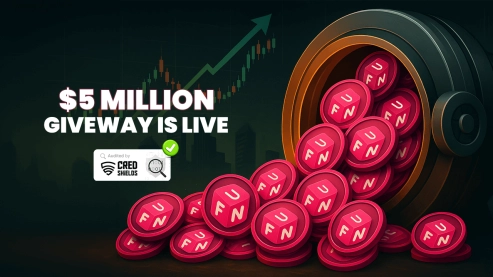Bitcoin's DeFi Prospects: Exploring Innovation and Challenges
Ethereum's comprehensive developer network and sophisticated smart contract features have positioned it as a leader in the decentralized finance (DeFi) sector. Solana and several Ethereum L2 blockchains have also made significant strides in this area. Bitcoin is making progress too, becoming an increasingly enticing option for DeFi integration, especially with the help of protocols like Sumer Money.
An array of DeFi services available on the Bitcoin blockchain and its L2 protocols allows users to trade, lend, borrow, or participate in other financial activities using Bitcoin, all while preserving the network's decentralization and security. This shift has enabled Bitcoin owners to utilize their assets more effectively, engaging with DeFi protocols that were previously accessible only to users of other L1 chains.
The Taproot upgrade in 2021 was a turning point for this transformation. It enhanced Bitcoin's scripting abilities, boosting both efficiency and privacy. Crucially, it laid the groundwork for developing decentralized applications on Bitcoin. This progress has allowed for complex financial interactions and broadened the range of decentralized services available to users.
Aiming to Boost the DeFi Utility of the Leading Cryptocurrency
Sumer Money, a DeFi liquidity infrastructure protocol, is dedicated to boosting Bitcoin's utility within DeFi. The platform recently reached over $100 million in Total Value Locked (TVL), illustrating its growth as a capital-efficient synthetic asset and lending protocol. Its role in supporting Bitcoin's growing footprint in DeFi has been pivotal, allowing Bitcoin holders to explore opportunities for generating cross-chain yield without compromising their assets' intrinsic security.
Sumer is gearing up for deployment on Berachain, a rapidly expanding platform with TVL deposits surpassing $3 billion. This expansion will focus on Berachain-native assets like BERA, BERA LSTs, HONEY, and NECT to support leveraged strategies and enhance liquidity depth.
Bitcoin's Role in Enhancing Interoperability, Stability, and Liquidity in DeFi
Bitcoin enhances interoperability with other blockchains within DeFi, creating a more streamlined and interconnected ecosystem. Solutions such as the Stacks blockchain enable decentralized applications (DApps) and smart contracts to function on Bitcoin, improving its capabilities and interoperability with other platforms. Offering DeFi services on Bitcoin will expand the array of financial services within the digital asset ecosystem, attracting more users drawn by Bitcoin's dependability and security.
It's believed that up to a trillion dollars' worth of Bitcoin liquidity is sitting idle in cold wallets. Bitcoin DeFi has the potential to unlock this liquidity. While Bitcoin is well-known as "digital gold," advocates for Bitcoin DeFi suggest that holders could utilize their dormant Bitcoin more efficiently.
Bitcoin DeFi could also tackle concerns about the flagship cryptocurrency's security budget. Every four years, Bitcoin's inflation rate halves, which reduces mining rewards. Although this was beneficial for early growth, it raises worries about depleting the security budget unless transaction fees increase. The surge in BRC-20 tokens and ordinals suggests that Bitcoin DeFi might stimulate more network activity, boosting fees and strengthening the security budget.
Use cases include Bitcoin-native assets, wrapped Bitcoin, and L2 solutions. Bitcoin DeFi facilitates the issuance of fungible and non-fungible assets on the blockchain, transferable via L2s or the Bitcoin mainnet. Initiatives like Taproot Assets have advanced the native creation of fungible tokens on Bitcoin.
The use of wrapped Bitcoin in DeFi enhances Bitcoin's functionality and liquidity, while Bitcoin L2 networks broaden the possibilities and introduce advanced smart contract features to Bitcoin.
There's also potential in borrowing and lending. Bitcoin DeFi aligns with the principle that decentralized money markets are fundamental to DeFi networks. Users can borrow assets or earn interest by using Bitcoin as collateral, opening up new financial opportunities.
Addressing and Mitigating Risks
As benefits and use cases expand, efforts to mitigate inherent risks, such as smart contract vulnerabilities, are also increasing. Bitcoin L2s and wrapped assets can introduce code bugs and exploits. Reentrancy attacks are a common vulnerability, addressed by using a security pattern called CEI, or checks-effects interactions, ensuring state changes are made before calling external contracts.
Other risks include governance attacks, flash loan attacks, oracle manipulation, signature verification exploits, and access control issues. Fortunately, these risks can be addressed. Governance attacks can be mitigated by enforcing a time-lock security pattern, giving the community ample time to respond to malicious proposals.
Flash loan attacks can be countered by setting transaction slippage limits to neutralize major price variations.
Avoiding oracle manipulation involves using multiple oracles for cross-verification of data.
Implementing EIP-712 or another secure signature scheme minimizes the risk of signature verification vulnerabilities. Reliable input validation checks for signatures are recommended, and using nonces can prevent replay attacks.
Access control is crucial for protocol functions, requiring stakeholders to ensure roles and permissions are correctly assigned and use the onlyOwner modifier. Thorough testing and code reviews can confirm the security of critical functions.
Bitcoin's UTXO model can lead to an accumulation of small transactions, resulting in Bitcoin dust: unspendable BTC that affects portfolios. The dust threshold varies with network activity, but a common guideline is holding at least 500,000 Satoshi as a UTXO.
Finally, governments may impose strict regulations on Bitcoin-based DeFi due to concerns about money laundering, taxation, and consumer protection. However, with Donald Trump's victory, stringent regulations are becoming outdated in the US, potentially heralding a deregulation-fueled boom in the crypto market. One possibility is reclassifying cryptocurrencies as commodities rather than securities, placing them under the Commodity Futures Trading Commission's jurisdiction instead of the SEC. The CFTC has been more favorable towards crypto, advocating for deregulatory measures.
Disclaimer: This article is provided for informational purposes only. It is not offered or intended to be used as legal, tax, investment, financial, or other advice.
Investment Disclaimer















.png)
.png)

